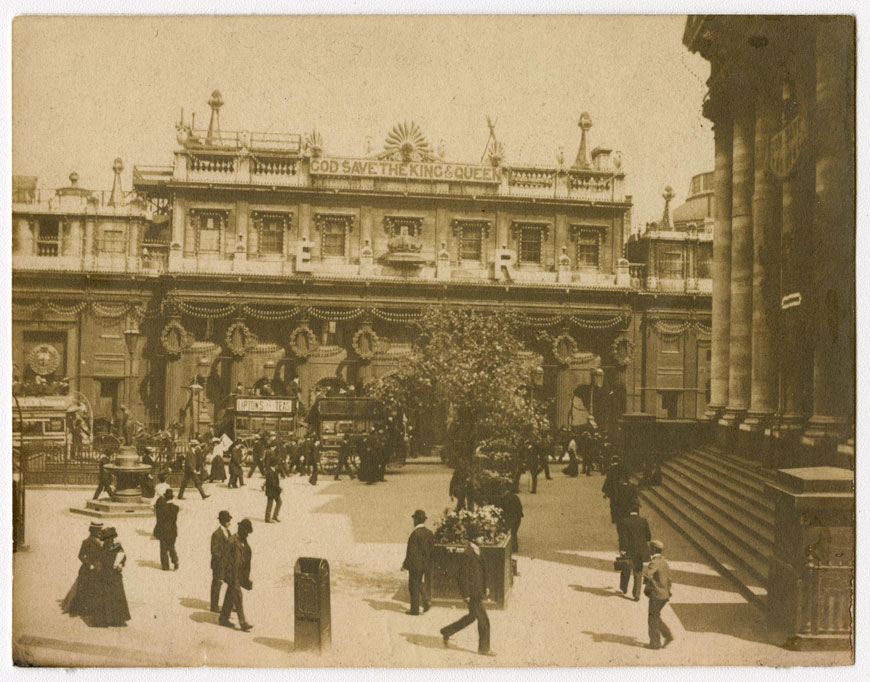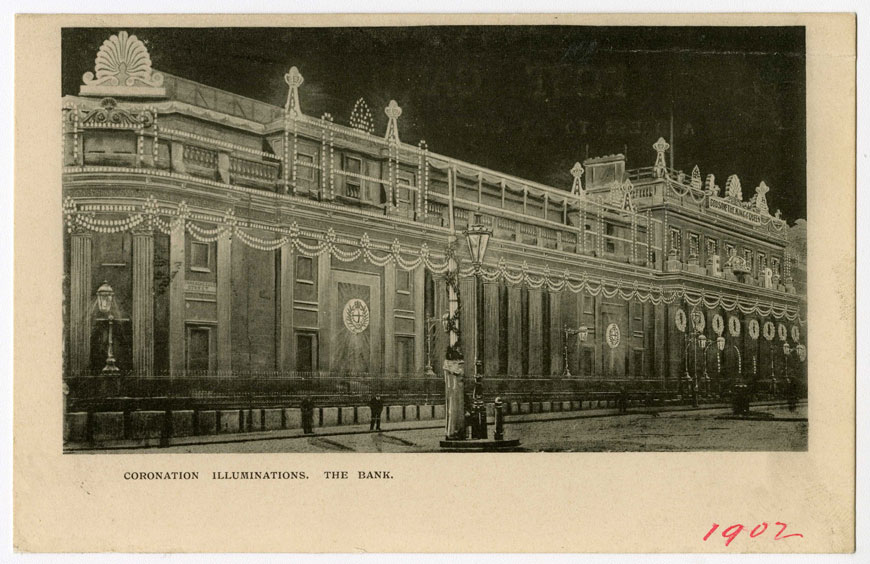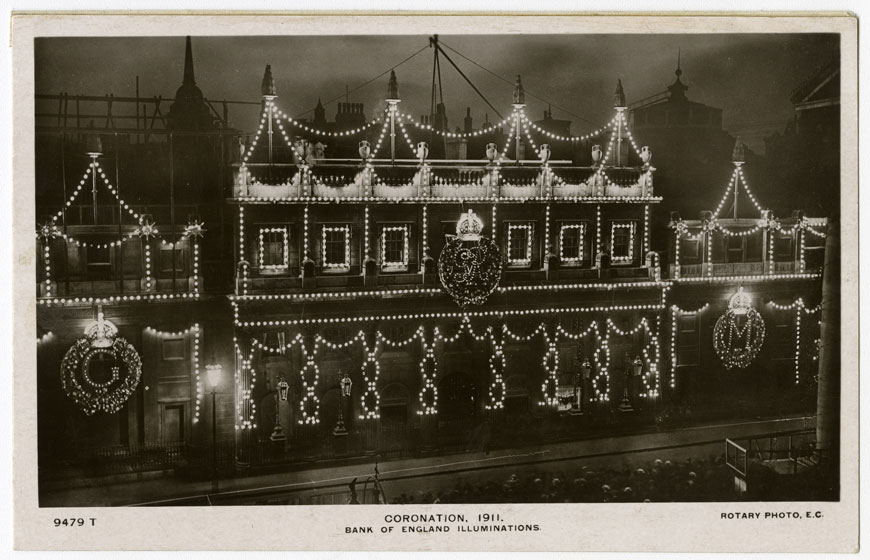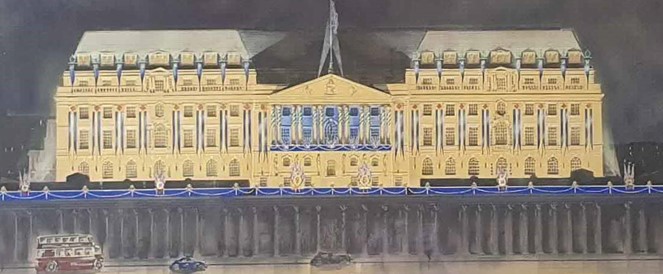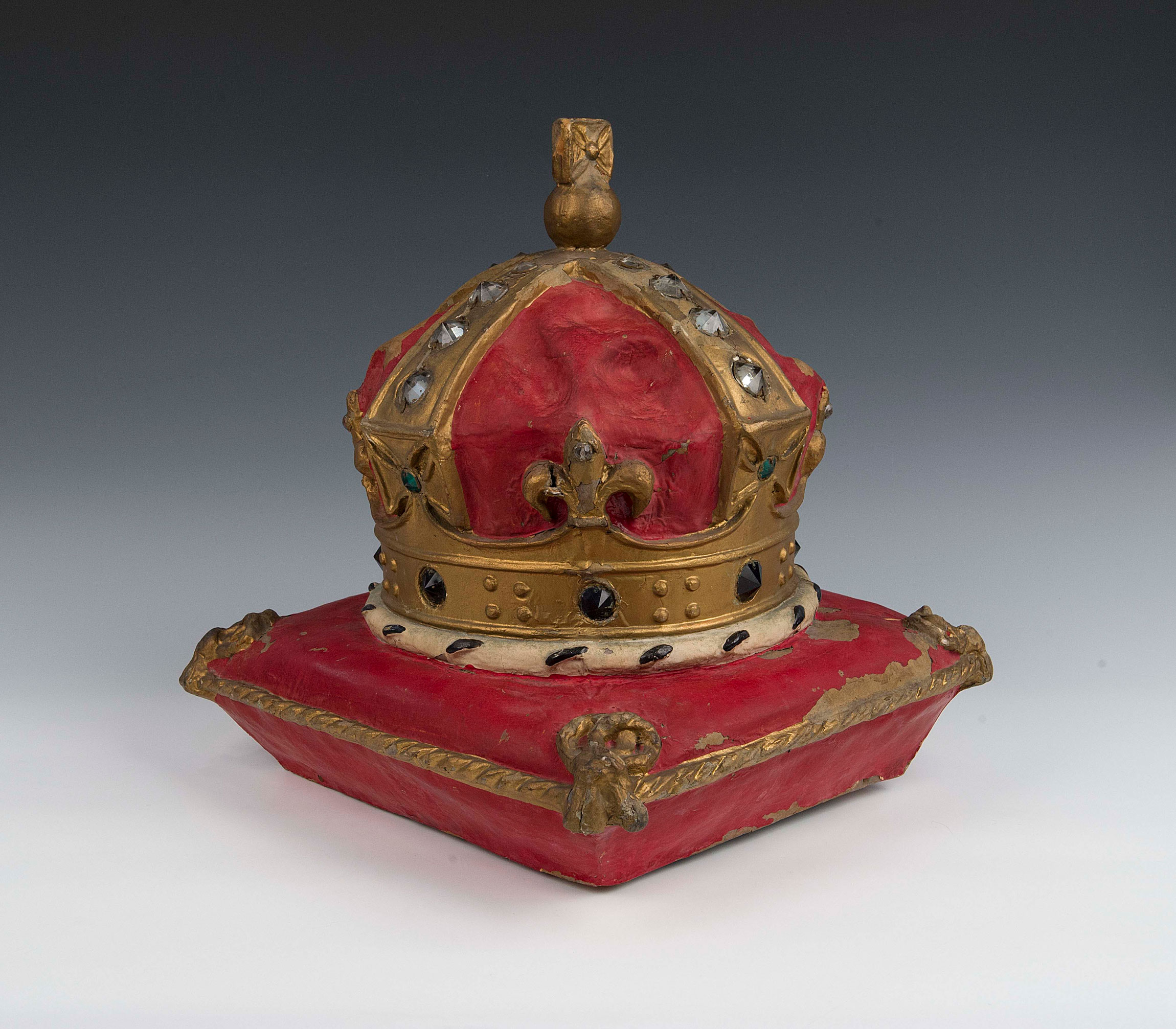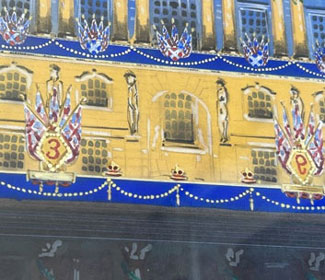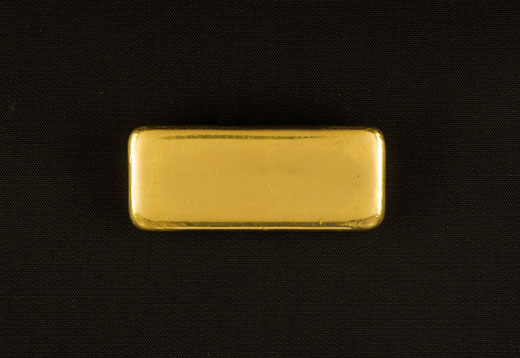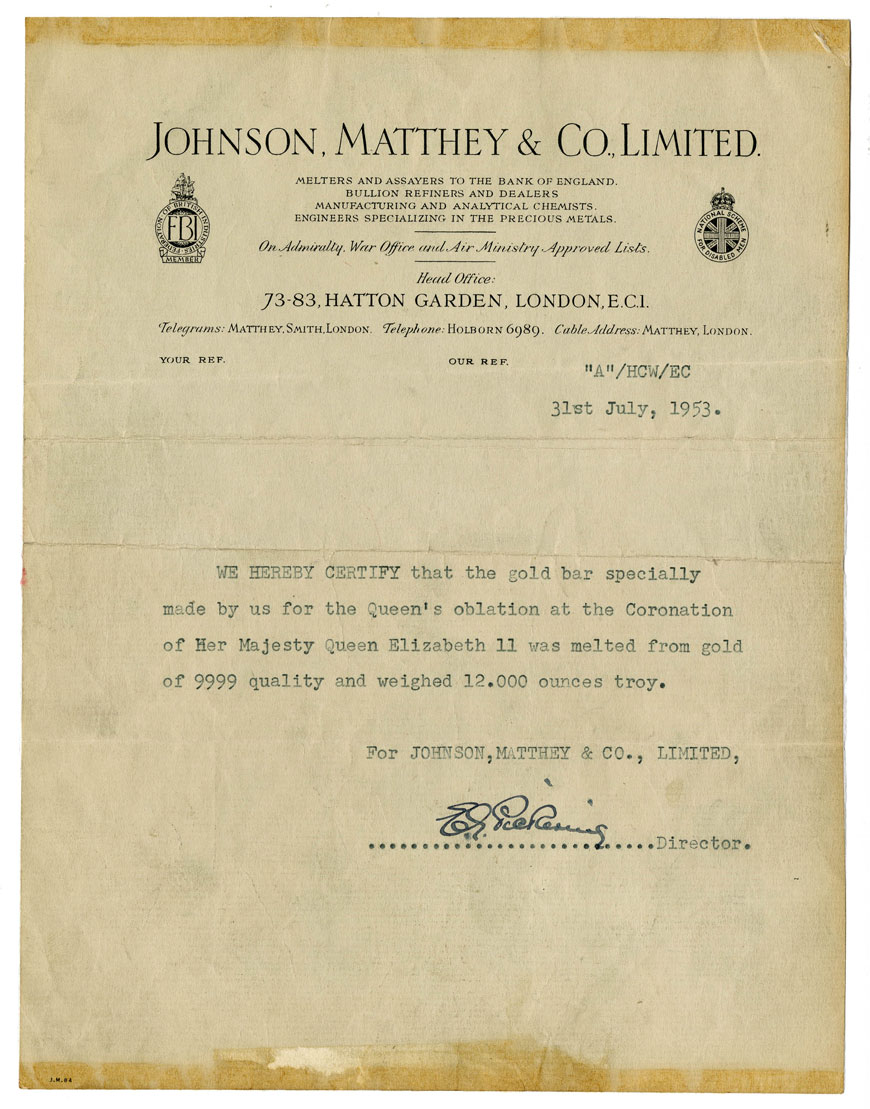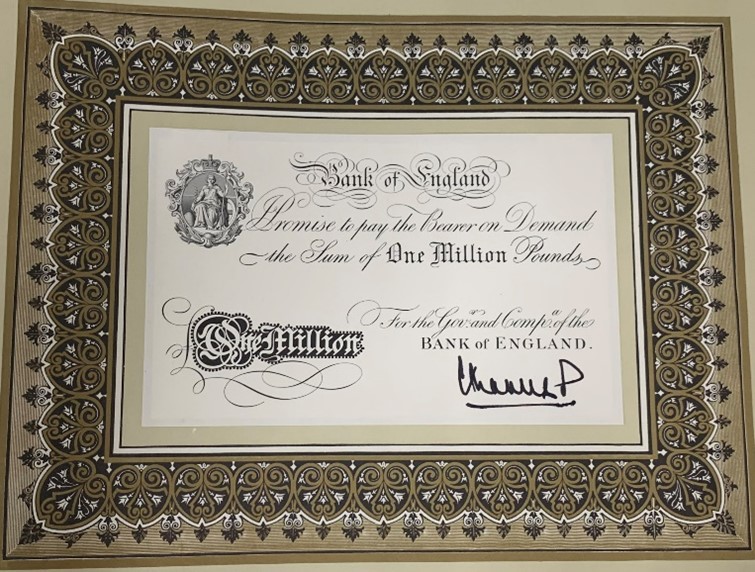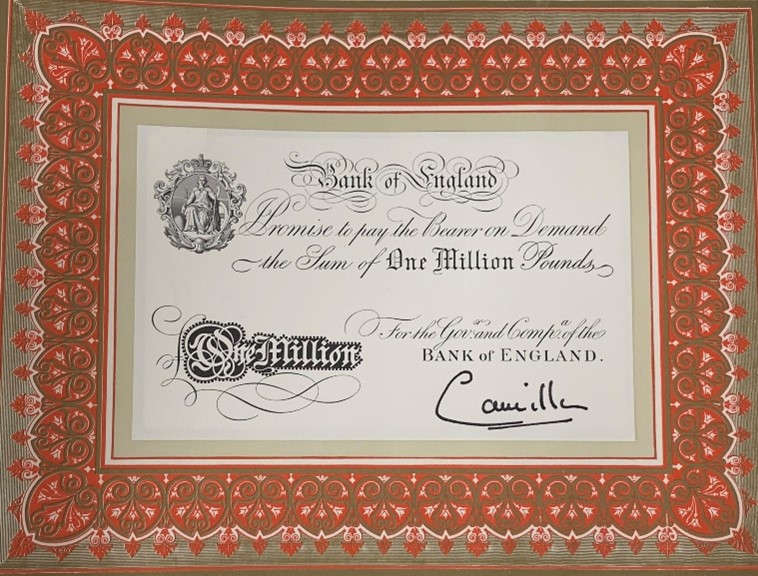Blog
Jennifer Adam, Curator
Our historical collections include many pictures of the Bank of England, including images of the Bank decorated for the coronations of previous monarchs.
There’s a long tradition of decorating public buildings for such an event, and some of our records are in the form of souvenir postcards. A couple of these show the Bank in 1902 decorated for the coronation of Edward VII, bustling with people during the day, and lit up at night. As well as the ER monogram above the door (For ‘Edward Rex’, or King Edward), there’s also a banner reading ‘God Save the King and Queen’, celebrating the new King and his Queen, Alexandra.

